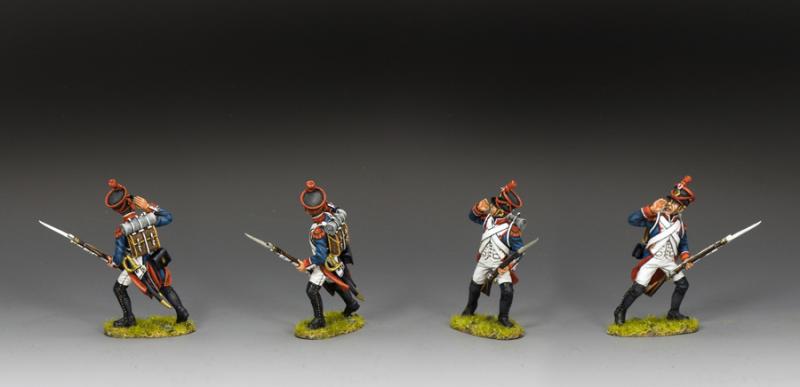French Line Infantry Infantryman Shouting Encouragement--single figure
$49.00
Item Number: NA517
French Line Infantry Infantryman Shouting Encouragement
Going into the attack, this man calls on his comrades to follow.
“VIVE L’EMPEREUR!”
Following the French Revolution of 1789, the system of ‘named’ regiments of the old army was abandoned and replaced by the introduction of a series of large formations called ‘Demi Brigades’.
These units usually consisted of two or three battalions, to be known as demi brigades in an attempt to avoid the feudal connotations of the term, ‘Regiment’.
By 1793, this all-new, Revolutionary Army consisted of 196 infantry demi brigades, with the bulk being described as… ‘Line Infantry’.
The term ‘Line Infantry’ describes the type of infantry soldiers that made up the vast majority of European land armies from the early 19th century onwards. For both battle and parade drill, it usually consisted of two to four ranks of foot soldiers drawn up side by side in rigid alignment, thereby maximizing the effect of their massed firepower on the enemy. Some time later, the term came to be applied to regular regiments ‘of the line’ as opposed to ‘Light Infantry’… skirmishers, militia, and other support personnel, plus some other categories of infantry not focused on heavy front-line combat.
As mentioned earlier, Line Infantry soon became the most common type of Infantry in European countries, with specialists such as Voltigeurs and Grenadiers, formerly elite troops, gradually being absorbed into these new formations.
To successfully perform, the Line movements required a large measure of strict discipline and many hours of practice until they became second-nature. During training, both drill and corporal punishments were widely used.
During this time, the standard French musket was the ‘Charleville’, a .69 calibre weapon that served from 1717 until the mid 1840s. This weapon could and would often have a separate bayonet attached.
Released in FEBRUARY 2025.

